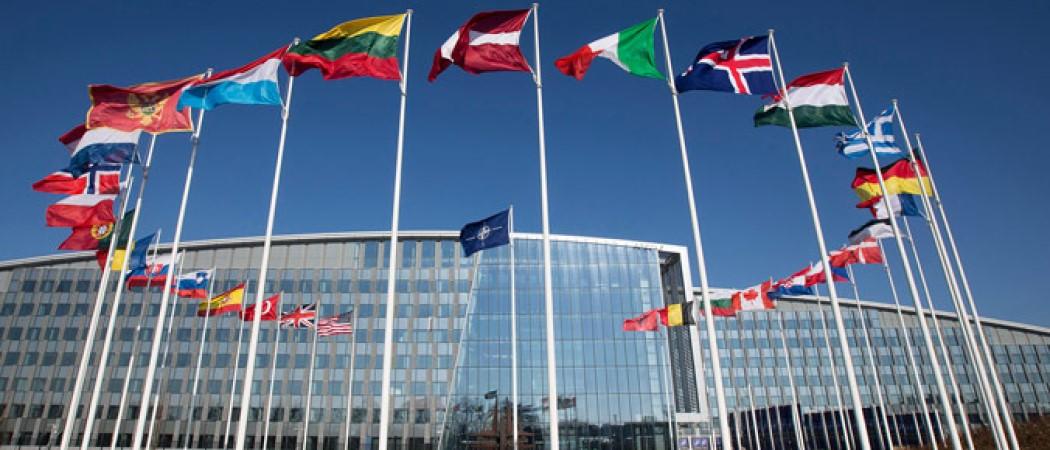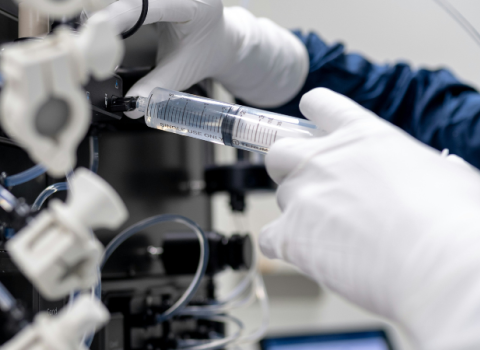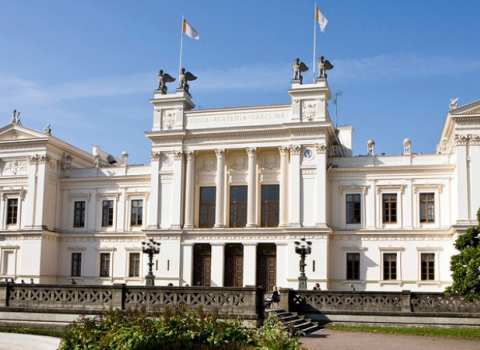As Russia wages war in Ukraine, NATO has fleshed out plans for a network of technology accelerators and test labs, paired with a €1B venture fund. The push to promote private sector innovation marks an almost ‘revolutionary’ shift

NATO Headquarters in Brussels, Belgium. Photo: NATO
NATO has launched a new research programme called DIANA to bring industry, start-up companies and academia together to research new dual-use technologies that address both societal problems and national security issues.
The Defence Innovation Accelerator for the North Atlantic (DIANA) is focusing on technologies such as artificial intelligence, big data processing, quantum-enabled technologies, autonomy, biotechnology, novel materials and space.
In its initial stage, DIANA will run a network of more than 10 accelerator sites and over 50 test centres in innovation hubs across NATO alliance countries. The aim is to give innovators the means to bring dual use technologies closer to the market. No budget for the network has been announced yet, but pilot activities will start as early as summer 2023, with the aim of being fully up and running in 2025.
There is also a complementary €1 billion venture capital fund for early stage start-ups.
Tomas Jermalavičius, head of studies at the Estonia-based think tank International Centre for Defence and Security (ICDS), says this marks a notable shift in the alliance’s stance on innovation.
“It‘s almost a revolutionary step. Creating this NATO structure shows flexibility and ability to take advantage of all the capacities that exist in the private sector, where innovations are born,“ he said.
Until this point, the alliance has only supported applied research through the Collaboration Support Office in Paris, leaving a gap in support for translating technologies to the market.
The bid to spruce up its innovation capabilities predates the Russian invasion and was agreed on at the 2021 NATO Summit in Brussels. The fleshed out plans for DIANA were published last week, following a meeting of NATO defence ministers. This is not the only military research announcement to pop up in the past weeks, with the US, Australia and UK setting out the AUKUS Quantum arrangement which eyes expanded quantum, hypersonic and other joint weapons research.
Technology dominance
The nine technologies NATO wants to advance are AI; data and computing; autonomy; quantum-enabled technologies; biotechnology and human enhancements; hypersonic technologies; space; novel materials and manufacturing; and energy and propulsion.
These are all strategic for NATO if it is to maintain technological dominance. Losing grip was one of the drivers for DIANA, Jermalavičius says.
The bid for technology dominance over countries like China and Russia is also a driver for DIANA‘s goal of shortening the technology development cycle, especially when it comes to software, AI and quantum. “It’s a long horizon, but capabilities do not appear overnight,” said Jermalavičius.
The plan is for DIANA to launch challenge calls for non-dilutive financing that does not require start-ups to give up equity or ownership in their company. Mentoring, technology testing and potential contract opportunities will be available to go hand in hand with the financing.
This will be delivered through network of innovation hubs across the alliance. One such site is the Big Data for Smart Society Institute (GATE) based in Bulgaria. An official at GATE said that the institute’s work in DIANA will focus on digital health, intra governmental communications and using data in industry and city infrastructure. One focus will be on disinformation research.
However the official noted DIANA is still in its early stages. Talks are ongoing with NATO to flesh out exactly how cooperation will work between research centres, the national government, and the NATO secretariat.
The approved charter stipulates some details, though others are still to be discussed, for example the affiliated centres of the network and the points of contact between them. The official said that many of these are likely to be finalised at a meeting at the end of June.
Host institutions
Last week, the UK and Estonia were announced as the hosts of the European part of DIANA.
The Estonian accelerator will be based in Tallinn, while Imperial College London will host the UK headquarters at its Translation & Innovation Hub, from where the Institute for Security Science and Technology will lead Imperial’s work in DIANA.
The UK headquarters is also supported by the UK Defence and Security Accelerator (DASA), which funds projects that have uses in defence and security. The accelerator works with major defence companies and the US Department of Defence’s Tri-Service Office.
The UK and Estonian accelerators are to support start-ups working on dual-use technologies with funding and expertise. Researchers will also be able to use facilities such as the Defence BattleLab in Dorset, UK, a test centre that has air and sea ranges to test defence equipment.
A DASA representative said research at the UK headquarters is likely to focus first on AI and autonomy, which is a focus of DIANA as a whole. Over time the UK site could to expand into biotechnology and materials.
Nine accelerators are foreseen in Portugal, UK, Belgium, Denmark, Estonia, Italy, Turkey, Greece, and Czech Republic. Most European NATO members will host test sites, of which there will be 47 in total, except for France, Lithuania, and five Balkan countries, Slovenia, Croatia, Albania, Montenegro and North Macedonia.
Quantum in Denmark
Denmark is leading DIANA’s quantum bid, with an accelerator to be located at the Niels Bohr Institute at Copenhagen University. The Technical University of Denmark, Aarhus University and the Danish National Metrology Institute will also provide test centres and manufacturing facilities.
For now, the goal is to augment the overall quantum capacities in the alliance, rather than focus on dual-use technologies. “The main mission here is to augment the entire NATO alliance within quantum technology,” said Jan Westenkær Thomsen, head of the Niels Bohr Institute.
Denmark has been one of the leaders in quantum physics since the 1920s, when Bohr and his colleague Max Planck put forward the quantum theory. This deep expertise in quantum has resulted in many spin out companies, Thomsen noted.
In the coming months, Thomsen and his colleagues will be hashing out the details of the centre with NATO. One of the universities’ goals is to use the know how of Denmark’s biotechnology accelerator at the Copenhagen Bio Science Park to reinforce the quantum counterpart.
There will also be cooperation with other DIANA centres. “This was already an integral part. I’m hoping this will be a main theme in negotiations with NATO,” said Thomsen.
Thomsen hopes the DIANA project will start delivering in five to ten years time, and he is positive about its potential. “It’s of course difficult to say at this stage, but it’s a great idea to pull resources from the whole NATO alliance together,” he said. “I’m pretty sure this will really change something for the better.”
Multi-sovereign venture capital
Before DIANA is up and running, the €1 billion Innovation Fund is expected to start making awards to start-ups developing dual-use technologies at the beginning of next year.
NATO says the fund will be, “the world’s first multi-sovereign venture capital fund”. It will be a patient investor, giving companies uninterrupted support for 15 years to scale up innovations.
NATO also intends to invest in the funds of venture capital firms that are already investing in technologies the alliance wants to promote.
Jermalavičius says the success of NATO‘s push for innovation will depend on how tolerant it is of failure. Out of 10 companies, it may be that only one will producea breakthough technology. Public money is traditionally adverse to failure, and NATO will have to get over this.
The venture fund is open to all NATO allies but it will not be known which countries are participating until the NATO summit in Madrid in June. “What we announced last week was an initial footprint. This will grow [or] finalise as DIANA reaches full operational capability by 2025,” said a NATO spokeswoman.



 A unique international forum for public research organisations and companies to connect their external engagement with strategic interests around their R&D system.
A unique international forum for public research organisations and companies to connect their external engagement with strategic interests around their R&D system.